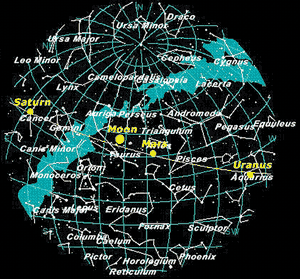 On the eve of the New Year, amateur astronomers worldwide are busy preparing observation calendars for 2006. However, such rsearch will not take place in Nepal, where practical astronomy has not reached this level of development. We have our own traditional (astrological) calendar-the Patro, which gives positions of the planets, the Sun and the Moon.
On the eve of the New Year, amateur astronomers worldwide are busy preparing observation calendars for 2006. However, such rsearch will not take place in Nepal, where practical astronomy has not reached this level of development. We have our own traditional (astrological) calendar-the Patro, which gives positions of the planets, the Sun and the Moon. In 2006, many space missions will be launched. On 11 January, NASA will send off the New Horizons Mission to Pluto, which is scheduled to reach the distant planet in 2015 and to explore the outer regions of the solar system as well. Four days later, NASA's STARDUST Mission will return to Earth with this world's first sample of comet dust. Astronomers believe the dust, collected from a comet, will provide clues to the solar system's history and structure.
With two solar and two lunar eclipses on the way, astronomers are calling 2006 the year of the eclipse. On 29 March, a total eclipse of the Sun will be visible from within a narrow corridor that traverses half the Earth, from Brazil to Mongolia. A partial eclipse will be seen from Nepal. The next annual solar eclipse will occur on 22 September but will not be visible here. A penumbral Lunar eclipse will be seen on 14 March, again partially visible from Nepal. Another partial Lunar eclipse will occur on 7 September as well. We shall talk more about these celestial events in the coming months.
In January, watch for the following:
The Sun
The Sun is in the constellation of Sagittarius (Dhanu) and crosses the border into Capricornus (Makar) on the 19. As the sun is 'climbing' northwards, can spring be far behind?
The Moon
The first quarter moon is on 6 January (18.56), the full moon on the 14 (09.47), last quarter on the 22 (15.12) and the new moon on 29 January (14.15). The Moon is at perigee (closest to Earth) on 1 January and at apogee (farthest from Earth) on 18 January.
The Earth
Earth is at perihelion (closest to the sun) on 4 January at 21.14, at a distance of 0.9833 AU (147 million km).
Mercury
Mercury rises at 05.36 at the start of the month and will be at superior conjunction on 27 January. That is the date when Earth and Mercury will be on opposite sides of the Sun.
Venus
The first evening of the year will find the crescent Moon to the left of brilliant, retrograding Venus. Look fast-Venus is visible in the evening sky for just one week. After an inferior conjunction with the Sun on 14 January, it quickly becomes a predawn morning star visible after the 20.
Mars
Mars, in the east at nightfall, is at its most brilliant now. NASA's two robot explorers, Spirit and Opportunity, have successfully completed a year of exploration on the surface of the red planet.
Jupiter
Jupiter, in Libra (Tula), rises at 2.36 on 1 January. With a 100mm telescope, you will be able to see the planet's equatorial cloud bands.
Saturn
Saturn, in Cancer (Karkat), is also at its brightest this month and reaches opposition on the 28. It rises by 7 and is out the rest of the night. NASA's Cassini spacecraft has been exploring this distant world for a year, sending home incredible pictures of the planet and its moons.
Meteor showers
The Quadrantids meteor shower will peak on 3-4 January. Typically, 40 or so bright, blue and fast (40 km a second) meteors will radiate from the constellation Bootes, some blazing more than halfway across the sky. A small percentage of them leave persistent dust trains. This shower usually has a very sharp peak, lasting only about an hour.


